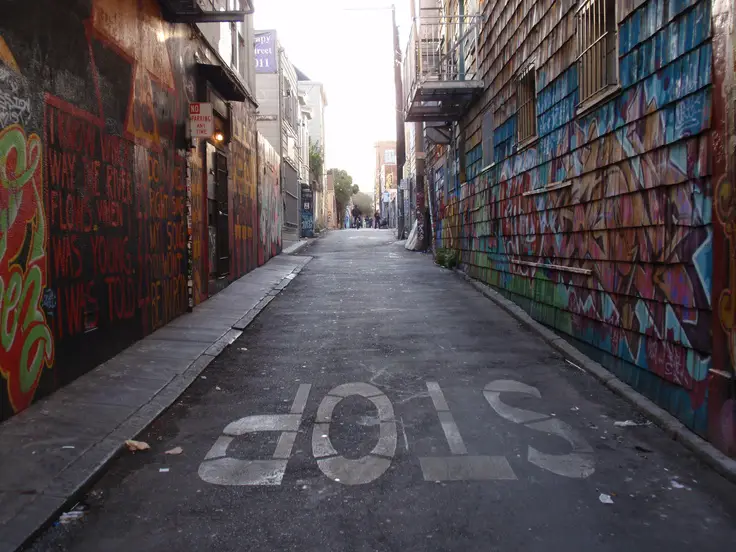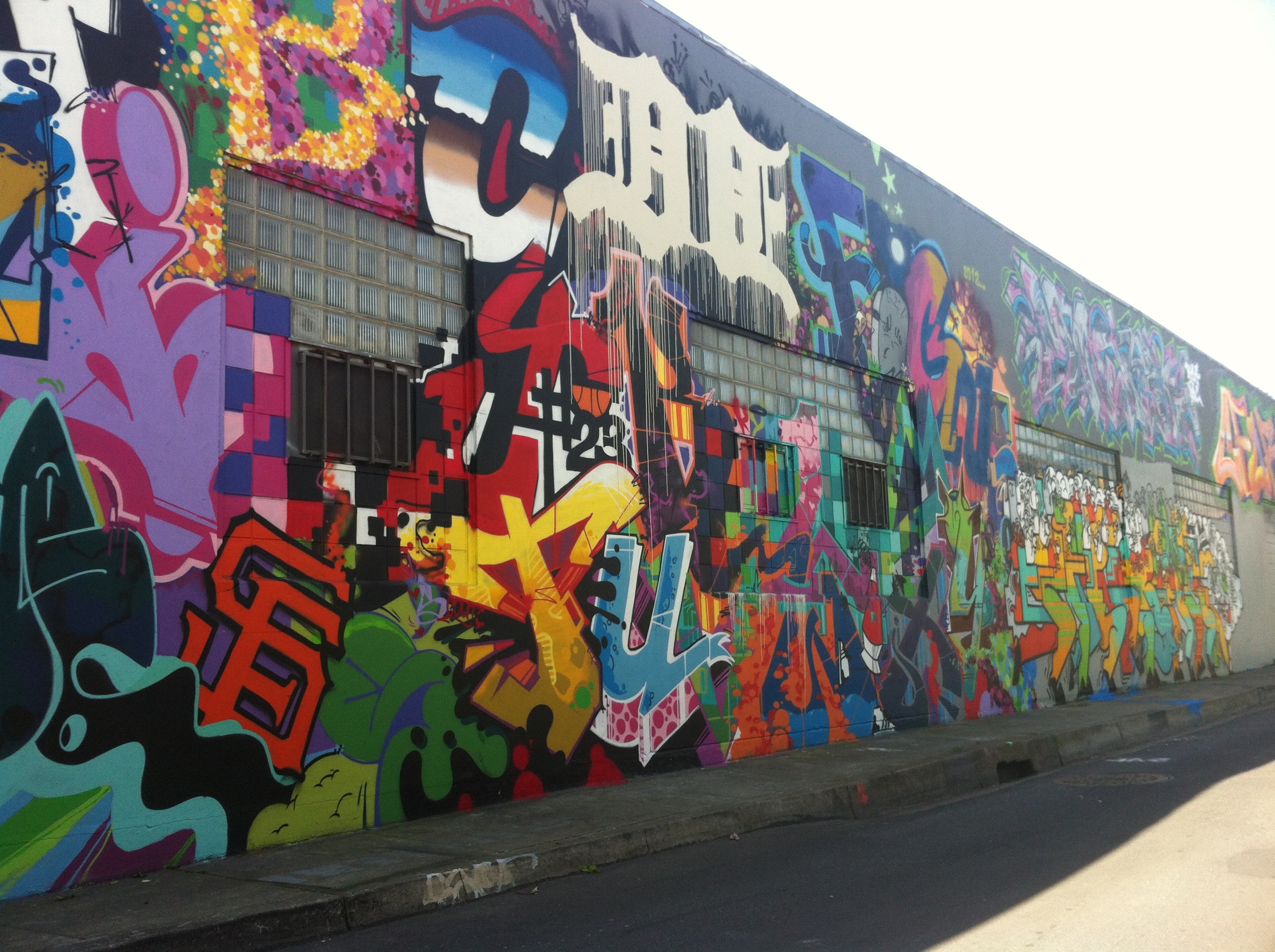San Francisco is rife with graffiti. Where I live and go to school, public art of all kinds line the alleys, freeways and stores. A lot of visible artwork here is sanctioned in various alleys around the city, including Balmy near my home, where dozens of artists display their creations, many of which carry political messages.
I had always thought of graffiti as a benign type of vandalism, because sure, it was “illegal” to spray-paint over city billboards and put murals on trains, but no one ever really gets booked or even incarcerated, right? Actually, wrong. Last year in New York City alone the police made 2,500 graffiti-related arrests, and more than 2,700 the year before. Local government does not take kindly to the defamation of its property, and according to California’s penal code 594 pc, graffiti as a form of vandalism is a felony offense.
Street artists like Banksy, whom I should emphasize is not a graffiti artist, have been calling attention to these laws as violations of First Amendment rights for a long time, but do their arguments hold water? Will graffiti ever be legal? Personally, I don’t think so, primarily because it is anti-capitalist in nature and thus there is little “benefit” to legalizing it.
First though, a distinction: While graffiti and street art exist in the same spaces and are often consumed next to each other, there is a big difference between being commissioned for a piece and creating a name for yourself in the community. Artists are built by reputation and networking through graffiti crews, and “painting” becomes an extension of the crew’s reputation. Aliases are used as much for establishing the artist as they are for protecting themselves from the law. And obviously, there’s no money in writing for one’s self unless someone wants to pay. But there’s no agenda either.

Here in the Bay Area, a lot of works around the East Bay are commissioned pieces by known artists and serve an aesthetic purpose or promote a message. In fact, a majority of the new artwork I see in the city is related to Black Lives Matter, immortalizing the victims of the Oakland and San Francisco PD. At the same time, plenty of corporations have employed these causes in the past to better “relate” to their targeted consumers, so how authentic can street art really be?
All too often, for street murals to be legal they have to be paid for, and once sponsorship enters the conversation, motive and message become distorted. If someone pays for something, they expect something. So unless you’re talking about a sectioned area or cordoned alley that is dedicated purely to painting, it’s hard to envision a scenario in which graffiti is made legal by any other means than changing it into something other than graffiti. In other words, legal graffiti isn’t really graffiti at all.
Second, cleaning up graffiti is expensive. Buffing it costs the city upwards of $20 million every year, coupled with about 250 arrests. It’s comical that a city brimming with homelessness would rather spend money wheat-pasting walls than keeping bodies off the sidewalk, but it fits into my graffiti versus capitalism angle quite nicely.
Graffiti is not illegal because it’s ugly or because it hurts the businesses it graces; it’s unlawful because it has little capitalistic value. It cannot, to an acceptable scale, be harnessed as an advertising tool or consumerist weapon because its creators are by principle working against that. Graffiti is not for sale; it’s for the people.
As a movement, it reminds me of the system of French salons that dictated value in the art world for hundreds of years. Until the Impressionist movement in the late 19th century split from them, the salon system, which was sponsored and organized by the Royal Academy of Art, was heavily biased toward traditional, literal methods of painting and sculpting. Subjects were the focal point, and techniques used were intended to heighten the realism of the piece. This clashed with the philosophy of Impressionists who sought to express the emotional experience of landscape rather than its literal rendering.
The heavy use of bright colors and conscious rejection of “academic” technique sounds a lot like when someone complains that their building was “tagged.” I think what the Parisian art snobs disliked the most was how subjective the paintings were, and much like graffiti, what people could do with that freedom. When art is not confined to a salon, it spills into the street. This makes metaphorical, societal higher-ups nervous, so they impose laws.
Granted, not all graffiti stands for something, and other times it stands for something, but its message is negative. It is plagued with danger, physical and legal, and rarely will society reward or acknowledge the talent in it, because it’s vandalism.
But is Banksy vandalism? Is his art, laced with intrigue and sophistication, somehow different than a burner in a freight yard? Middle class liberals love him because his art has a “message,” some notion or nugget that compensates for the fact that he’s subject to the same laws as the kids in my city. Highbrow art has always had a problem with inclusivity, and low-brow art has always had to fight to be considered valuable. Graffiti is a legitimate art form with a thriving community and plenty left to say, but it will never be legal.














